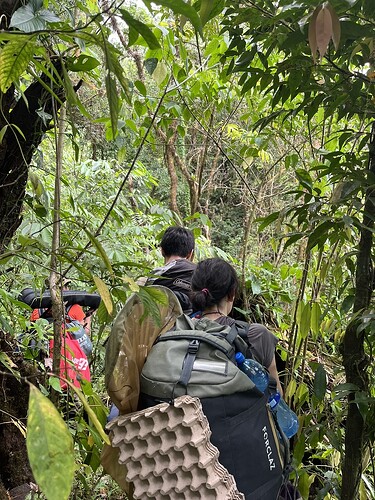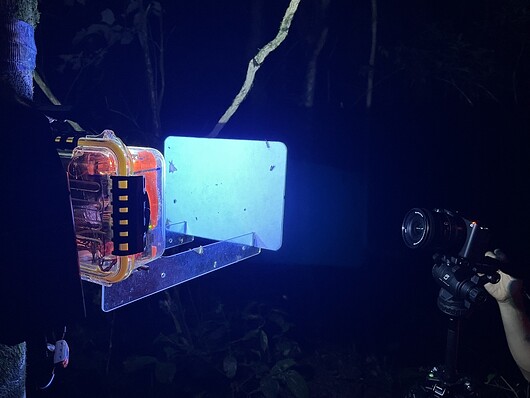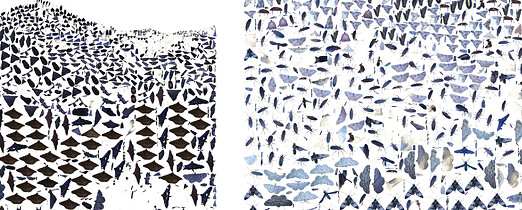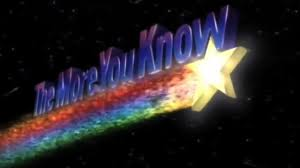Hi everybody!
Each month, I’m sharing regular Mothbox updates while working with the Digital Naturalism Laboratories (Dinalab) team in Panama. For those curious, you can read the previous Mothbox updates here. In today’s post, I’ll be talking about our recent Mothbox field expedition to Cerro Hoya National Park in Panama.
The Mothbox Expedition!
At the end of January, we undertook a four-day expedition to showcase the Mothbox’s technical accomplishments thus far. We were a team of seven, consisting of lepidopterists, field biologists, interactive field designers, videographers, and open science practitioners. We trekked from sea level to the cloud forest, deploying 19 Mothboxes along the way.
Photo of our team trekking through Cerro Hoya National Park
The expedition took place at Cerro Hoya National Park in Panama, a protected area nestled at the very bottom of the Azuero Peninsula. Its unique tropical montane and moist forests are home to dozens of endemic species, and we set out to document the diversity of nocturnal insects that could be found there. To do this, we set up Mothboxes along a 1400-meter elevation gradient (starting at 100 meters and ending at 1500), deploying one Mothbox every 100 meters. Mothboxes between 100 and 1200 meters stayed out for three nights, while those between 1200 and 1500 meters stayed out for two nights.
Photo of a Mothbox on the first night of the expedition.
Taking a look at our data after the expedition
When we returned from Cerro Hoya, we examined the data collected by the Mothboxes. We were curious to know how many of them successfully took pictures, and we were ecstatic to find that 18 of the 19 Mothboxes took clear photos from which we could detect insects. Andy (@hikinghack) even made some cool visualizations showing the insects that visited our Mothboxes!
Visualization made by Andy showing the insects that visited 16 of the Mothboxes during the expedition.
A closer look at the data collected from two deployments
Over the next few months, we will work to identify the various insects we captured in our images and write up a research paper detailing the expedition and its findings.
Documentary Coming Soon!
In the coming weeks, we will release a documentary about the Cerro Hoya expedition and the role of low-cost and open source technologies like the Mothbox in biodiversity monitoring projects. In the meantime, we’ve got a short teaser that you can watch here: https://www.youtube.com/watch?v=z1uDDqOvxmk
Buy a moth shirt and other cool merch!
We now have an online store where you can buy moth-themed shirts, swimsuits, hats, and more to raise funds for the Mothbox project. Andy (@hikinghack) developed a fun script to help generate patterns from moth image datasets that can be turned into clothes. So now you can order your own moth-themed clothing that also represents all the insects we saw on September 3rd, 2024, on a trip to Mt. Totumas in Panama!
What’s next for the Mothbox team?
Over the next few months, the goals for the Mothbox team are to develop a new version of the Mothbox that is scalable and easy to manufacture and to finalize the AI machine learning pipeline for detecting and identifying insects from Mothbox data. We’re also testing out a few modifications that can help us retain moths and other insects on the targets.
For more information on the Mothbox project, visit our GitHub. In the meantime, I’ll be back with more project updates next month!




